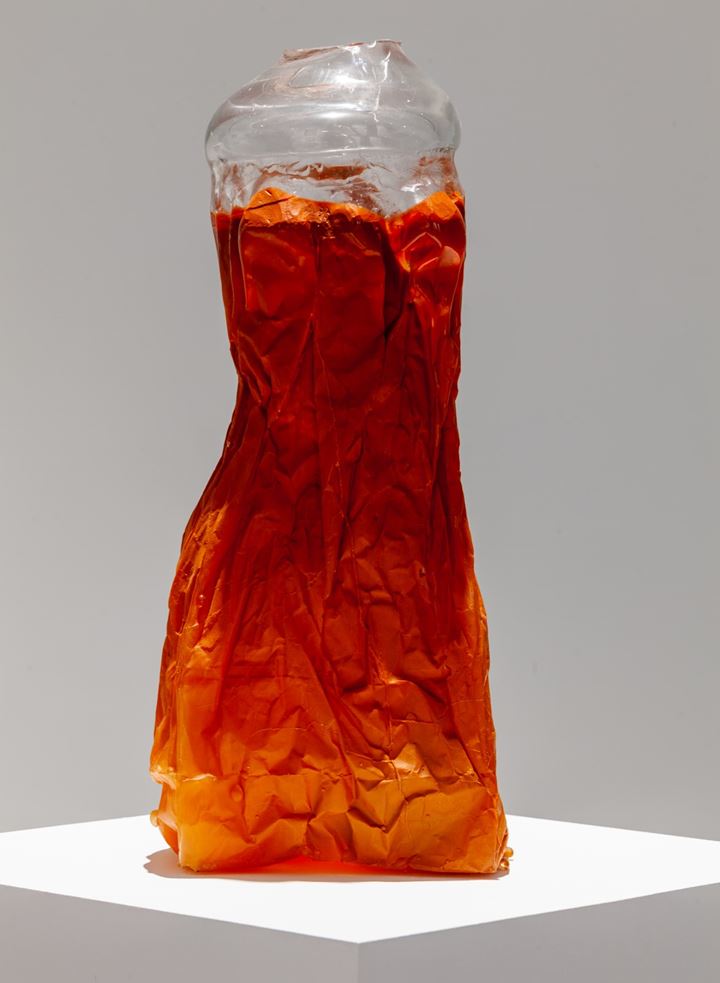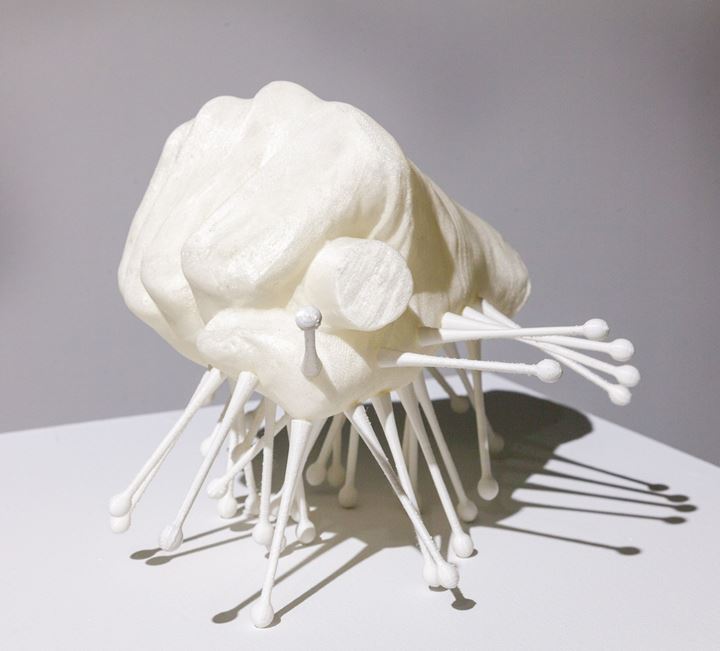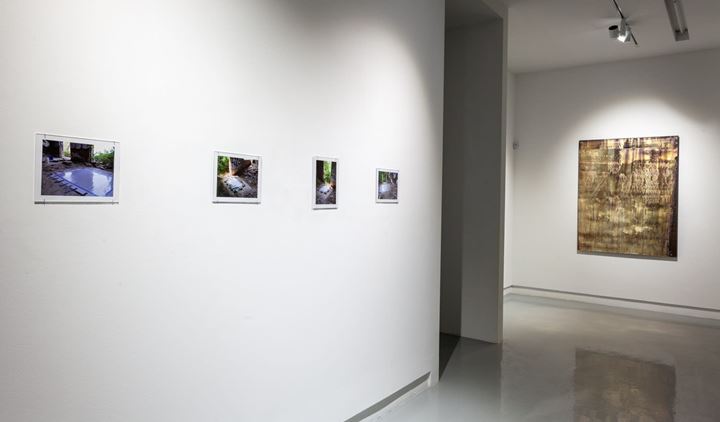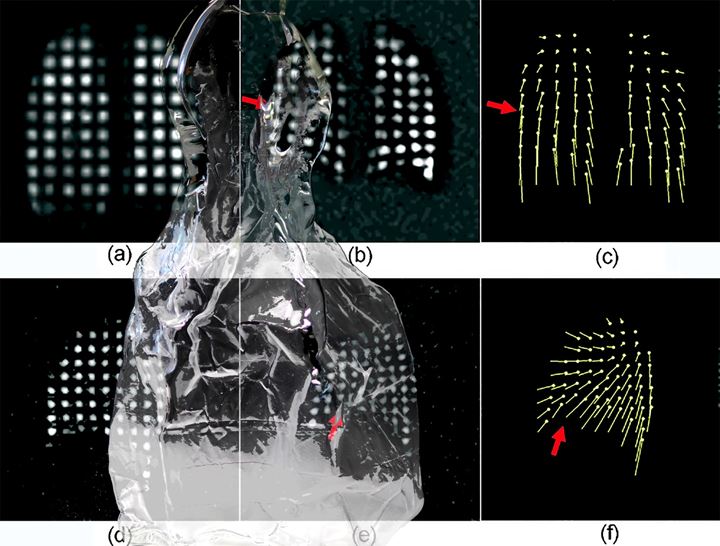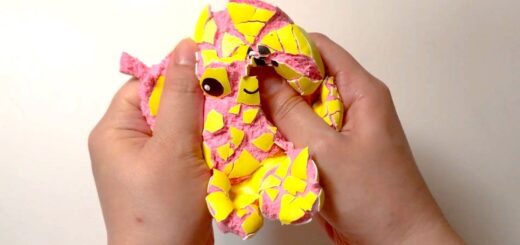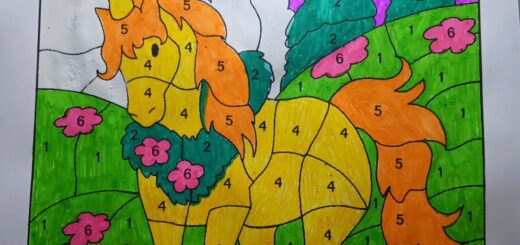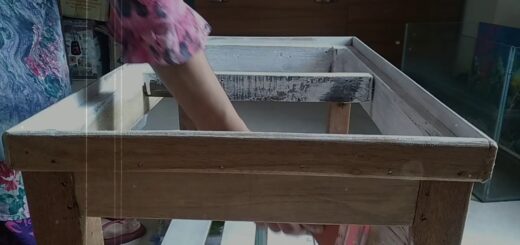Michael Joo Amplifies the Invisible at Kavi Gupta
[ad_1]
Sensory Meridian, Michael Joo‘s latest solo exhibition at Kavi Gupta in Chicago (14 January–10 April 2021) continues the artist’s interest in using art as a method of freezing or unveiling the properties of a moment or material.

Left to right: Michael Joo, From Without (2020). ABS 3D print. 38.1 x 58.4 x 45.7 cm; All One Thing (2020). Plastic 3D print. 27.9 x 38.1 x 25.4 cm. Exhibition view: Sensory Meridian, Kavi Gupta, Elizabeth St, Chicago (14 January–13 March 2021). Courtesy Kavi Gupta.
Entering the show, the viewer is greeted by six sculptures from Joo’s ‘Single Breath Transfer’ series (2018–2019). To make each work, the artist filled a paper or plastic bag with a single breath; the shape of the bag was then used as a mould for a blown glass cast.
The phrase ‘single breath transfer’ refers to a test that gauges the lungs’ ability to diffuse gases from inhaled air into the blood. Through the use of air and glass, the eponymous works reflect such an act of exchange between the ephemeral and the concrete.
Exhibition view: Michael Joo, Sensory Meridian, Kavi Gupta, Elizabeth St, Chicago (14 January–13 March 2021). Courtesy Kavi Gupta.
The excess glass at the top of each work—a by-product of the casting—is not removed, emphasising both the breath that shaped the bag and the breath that drives the glass blowing process. The results retain a high level of textural detail, illuminated by the gallery light that filters through the hollow forms as if they were lit from within.
Michael Joo, Untitled 5 (Single Breath Transfer) (2018–2019). Mold-blown glass. 47.2 x 20.3 x 15.2 cm. Exhibition view: Sensory Meridian, Kavi Gupta, Elizabeth St, Chicago (14 January–13 March 2021). Courtesy Kavi Gupta.
The current pandemic has prompted individuals to recognise the presence of invisible materials in their lives, such as the water droplets formed by breathing, and consequently re-evaluate their relationship to their surroundings. Sensory Meridian is a series of such re-evaluations, giving insight into a world order built from a range of lenses and senses.
Referencing the ‘SM’ of ASMR, Joo devotes the title of the exhibition, Sensory Meridian, to the amplifications of objects and instants
Presented for the first time is From Without (2020): a larger-than-life ABS plastic 3D print of the face of Anne Sullivan: the American teacher and lifelong companion of author and activist Helen Keller.
Michael Joo, From Without (2020). ABS 3D print. 38.1 x 58.4 x 45.7 cm. Exhibition view: Sensory Meridian, Kavi Gupta, Elizabeth St, Chicago (14 January–13 March 2021). Courtesy Kavi Gupta.
Being blind, Keller would never have seen this face. However, the topographical texture of the print and the long, thin forms—akin to cotton swabs or stamens—that protrude from the sculpture’s surface emphasise that it is possible to ‘see’ in other ways, including through texture and touch.
Michael Joo, All One Thing (2020). Plastic 3D print. 27.9 x 38.1 x 25.4 cm. Exhibition view: Sensory Meridian, Kavi Gupta, Elizabeth St, Chicago (14 January–13 March 2021). Courtesy Kavi Gupta.
Another larger-than-life 3D print presented for the first time is All One Thing (2020), depicting the fist of Abraham Lincoln. The print is based on a cast that was taken during one of the American president’s campaign trails, when he apparently lost muscle control from shaking so many hands, and had to hold a broom handle to stabilise his own.
The satin-textured print is lifted off the plinth by an underbelly of stamen-like forms, lending the work a sense of precarious balance and motion.
Exhibition view: Michael Joo, Sensory Meridian, Kavi Gupta, Elizabeth St, Chicago (14 January–13 March 2021). Courtesy Kavi Gupta.
While ‘Single Breath Transfer’ transformed bags Joo found on the street into precious works of art, All One Thing and From Without draw attention to the details of two impressive historical figures. Both sets of works offer perspectival shifts away from how the viewer may encounter such figures and objects in everyday life.
Michael Joo’s method often combines both scientific and artistic processes. In Shanghai Gallery of Art’s 2020 exhibition, AFTERMATH, alongside Gao Weigang, Joo conjured visions of an apocalyptic future, contributing amongst other works RECON (2017): sections of carbonised ubame oakwood and ganoderma mushrooms laid out across a series of floating tables.
Exhibition view: Michael Joo, Sensory Meridian, Kavi Gupta, Elizabeth St, Chicago (14 January–13 March 2021). Courtesy Kavi Gupta.
While RECON captures the essence of the tree through sampling, Joo also offered silver nitrate prints of trees in the series ‘Entasis’ (2016)—a method revisited in Sensory Meridian for the series ‘Various Low Mass Stars’ (2018).
To make these works, Joo installed nitrate plates within architectural ruins and exposed them to the elements over a number of days. The final prints reveal galaxies of glittering drips, oil slick-like rainbows, bubbles, and burns.
Exhibition view: Michael Joo, Sensory Meridian, Kavi Gupta, Elizabeth St, Chicago (14 January–13 March 2021). Courtesy Kavi Gupta.
Whispers and echoes spill out of the darkened second room of Sensory Meridian. Contained therein is the quadrophonic multimedia installation Untitled (2020). From the installation’s four speakers, a social neuroscientist ad libs about the subtle communications the underlie casual conversations.
Michael Joo, Untitled (2020). Quadrophonic multimedia installation. 14 min 53 sec. Dimensions variable. Edition of 3 plus 1 artist’s proof. Courtesy Kavi Gupta.
Prompting ASMR (autonomous sensory meridian response)—an often-pleasant physical response to certain audio-visual stimuli—in the viewer, the audio emphasises swallows and breaths between words and letters, so that the content of her observations becomes an undercurrent to the noises that surround her words.
Michael Joo, Single Breath Transfer (Hyperpolarized) (2020). Archival inkjet print. 60.96 x 81.28 cm. Courtesy Kavi Gupta.
Accompanying the audio is a 15-minute video on a screen installed in the centre of the room. A woman looks out, above, and to the left of the viewer, sometimes darting her eyes to the camera, while the camera pans and zooms in and out across her eyes, mouth, and cheeks, at times splitting focus between her face and footage of the recording’s sound levels.
Referencing the ‘SM’ of ASMR, Joo devotes the title of the exhibition, Sensory Meridian, to the amplifications of objects and instants, and in doing so, offers both pleasure and clarity on the details that fill one’s life.—[O]
[ad_2]
Source by [author_name]


